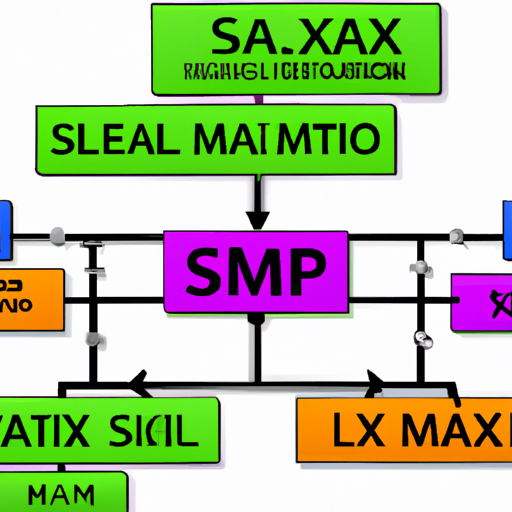Understanding the Different Types of XML Sitemaps and Their Benefits for SEO
XML sitemaps are an essential tool for optimizing a website for search engine optimization (SEO). They provide search engines with a comprehensive list of all the pages on a website, allowing them to quickly and easily index the content. XML sitemaps are also useful for informing search engines of any changes to the website, such as new pages or updates to existing pages.
Link : https://www.digital-online.tools/xml-sitemap-generator
There are several different types of XML sitemaps, each with its own benefits for SEO. The most common type is the standard XML sitemap, which is a simple list of all the pages on a website. This type of sitemap is easy to create and maintain, and it provides search engines with a comprehensive overview of the website’s content.
Another type of XML sitemap is the image sitemap. This type of sitemap is specifically designed to provide search engines with information about images on a website. Image sitemaps can help search engines better understand the content of a website, as well as improve the visibility of images in search engine results.
The third type of XML sitemap is the video sitemap. This type of sitemap is designed to provide search engines with information about videos on a website. Video sitemaps can help search engines better understand the content of a website, as well as improve the visibility of videos in search engine results.
Finally, the fourth type of XML sitemap is the news sitemap. This type of sitemap is specifically designed to provide search engines with information about news articles on a website. News sitemaps can help search engines better understand the content of a website, as well as improve the visibility of news articles in search engine results.
Overall, XML sitemaps are an essential tool for optimizing a website for SEO. They provide search engines with a comprehensive list of all the pages on a website, allowing them to quickly and easily index the content. Additionally, there are several different types of XML sitemaps, each with its own benefits for SEO. By utilizing these different types of sitemaps, website owners can ensure that their content is properly indexed and visible in search engine results.
Common Mistakes to Avoid When Generating an XML Sitemap
1. Not Including All Pages: It is important to ensure that all pages of a website are included in the XML sitemap. This includes pages that are not linked to from other pages, such as product pages, blog posts, and other content.
2. Not Updating the Sitemap Regularly: It is important to keep the XML sitemap up to date with any changes to the website. This includes adding new pages, removing old pages, and updating existing pages.
3. Not Submitting the Sitemap to Search Engines: Once the XML sitemap is created, it should be submitted to the major search engines. This will ensure that the search engines are aware of the website’s content and can index it properly.
4. Not Using the Correct Format: XML sitemaps must be in the correct format in order for search engines to be able to read them. It is important to use the correct syntax and structure when creating an XML sitemap.
5. Not Using the Correct File Extension: XML sitemaps must be saved with the .xml file extension in order for search engines to be able to read them.
6. Not Using the Correct URL Structure: URLs in the XML sitemap should be in the correct format, including the protocol (http or https) and the domain name.
7. Not Including Image and Video Sitemaps: If a website includes images or videos, it is important to create separate sitemaps for these elements. This will ensure that search engines are able to index them properly.
8. Not Validating the Sitemap: It is important to validate the XML sitemap to ensure that it is in the correct format and contains no errors. This can be done using a variety of online tools.
How to Optimize Your XML Sitemap for Maximum SEO Impact
XML sitemaps are an essential part of any website’s SEO strategy. They provide search engines with a comprehensive list of all the pages on your website, helping them to index your content more quickly and accurately. Optimizing your XML sitemap can have a significant impact on your website’s SEO performance, so it’s important to ensure that it is properly optimized. Here are some tips for optimizing your XML sitemap for maximum SEO impact.
1. Include All Relevant Pages: Make sure that all of the pages on your website are included in your XML sitemap. This includes pages such as blog posts, product pages, and any other pages that are important to your website.
2. Use the Correct Format: XML sitemaps should be formatted according to the Sitemap Protocol, which is a standard format for sitemaps. This ensures that search engines can easily read and understand your sitemap.
3. Include Last Modified Dates: Including the last modified date for each page in your sitemap can help search engines determine which pages are the most up-to-date. This can help them prioritize your content in search results.
4. Use Priority Tags: You can use priority tags to indicate to search engines which pages are the most important on your website. This can help them prioritize your content in search results.
5. Use Canonical URLs: If you have multiple versions of the same page, such as a mobile version and a desktop version, you should use canonical URLs to indicate to search engines which version is the preferred version.
By following these tips, you can ensure that your XML sitemap is properly optimized for maximum SEO impact. This can help your website rank higher in search engine results and drive more organic traffic to your website.
The Benefits of Using an Automated XML Sitemap Generator
An automated XML sitemap generator is a powerful tool for website owners and developers. It can help them to create a comprehensive and organized map of their website, which can be used to improve the visibility of their website in search engine results.
Using an automated XML sitemap generator can provide a number of benefits. Firstly, it can save time and effort. Generating a sitemap manually can be a time-consuming process, but an automated generator can quickly and easily create a comprehensive map of a website. This can be especially useful for larger websites with many pages.
Secondly, an automated XML sitemap generator can help to ensure accuracy. It can quickly and accurately identify any broken links or missing pages, which can help to improve the user experience of a website. It can also help to ensure that all pages are correctly indexed by search engines, which can help to improve the visibility of a website in search engine results.
Thirdly, an automated XML sitemap generator can help to keep a website up to date. As a website grows and changes, the sitemap needs to be updated to reflect these changes. An automated generator can quickly and easily update the sitemap to ensure that it is always accurate and up to date.
Finally, an automated XML sitemap generator can help to improve the overall performance of a website. By ensuring that all pages are correctly indexed and linked, it can help to improve the loading speed of a website, which can help to improve the user experience.
In conclusion, an automated XML sitemap generator can provide a number of benefits for website owners and developers. It can save time and effort, ensure accuracy, keep a website up to date, and improve the overall performance of a website.
How to Create an XML Sitemap for Your Website to Improve SEO
Creating an XML sitemap for your website is an important step in improving your website’s SEO. An XML sitemap is a file that contains a list of all the pages on your website, and it helps search engines like Google and Bing to better understand and index your website.
To create an XML sitemap, you will need to use a sitemap generator. There are many free and paid sitemap generators available online. Once you have chosen a generator, you will need to enter the URL of your website and the generator will create a list of all the pages on your website.
Once you have generated your sitemap, you will need to upload it to your website. You can do this by adding the sitemap to the root directory of your website. This will make it easier for search engines to find and index your sitemap.
Once you have uploaded your sitemap, you will need to submit it to the major search engines. You can do this by visiting the webmaster tools of each search engine and submitting your sitemap.
Finally, you will need to regularly update your sitemap. As you add new pages to your website, you will need to update your sitemap so that search engines can find and index the new pages.
By creating and regularly updating an XML sitemap for your website, you can improve your website’s SEO and make it easier for search engines to find and index your website.

